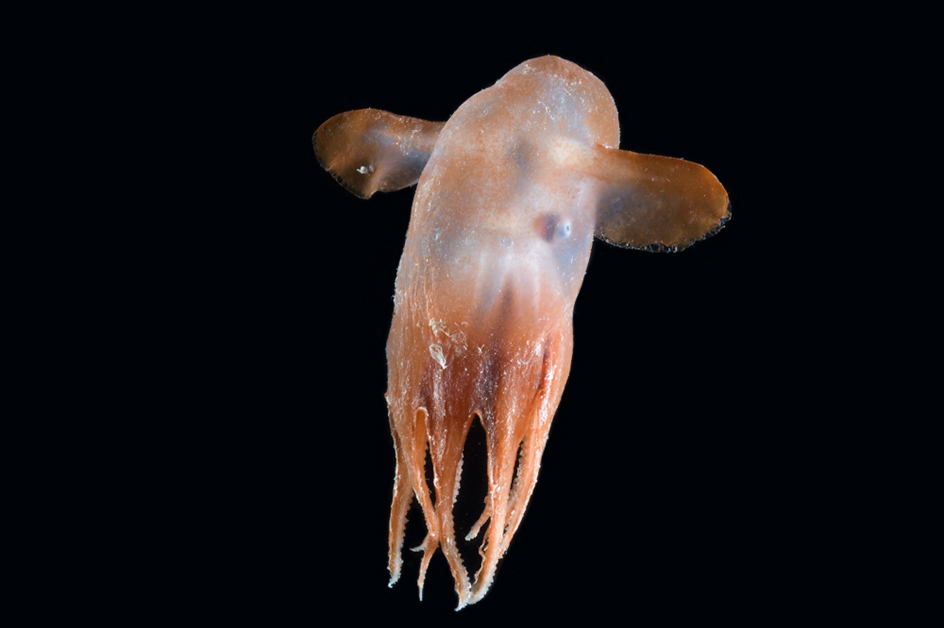Dumbo octopus is a deep-sea octopus noted for two large fins on the sides of its head. The octopus flaps these fins to move through the water. There are more than a dozen species (kinds) of dumbo octopus. Scientists know relatively little about the dumbo octopus because most species live deep in the ocean. The octopus gets its name from a fictional elephant in the movie Dumbo (1941), who flew by flapping his large ears.

The dumbo octopus may grow to more than 6 feet (1.8 meters) in length. Some individuals may reach as long as 13 feet (4 meters). The dumbo octopus has a soft, boneless body, with eight arms. Each arm has a single row of suckers. The suckers are surrounded on both sides by thin, fingerlike projections, called cirri. The cirri move in waves and are thought to create a current. This current may help to bring food toward the beaklike mouth on the underside of the head.
Some dumbo octopuses live near the surface. But most live at depths from 9,800 to 24,000 feet (3,000 to 7,200 meters). Dumbo octopuses can dive deeper than any other known cephalopods, a group of animals that includes octopuses and squids. Dumbo octopuses are found in the Pacific and Atlantic oceans, as well as the Southern Ocean around Antarctica. They usually live near undersea mountains or along continental slopes.
Some dumbo octopuses rest on the sea floor, with their arms spread out on the bottom. Others swim just above the bottom. Some swim near the surface.
Dumbo octopuses eat small shrimp and other crustaceans, as well as worms and shellfish. They are fed upon by various fish, sharks, marine mammals, and other cephalopods.
A female dumbo octopus lays one egg at a time rather than large numbers, as many other octopuses do. She attaches the egg to a hard surface, such as a rock. A tough case protects the egg.
